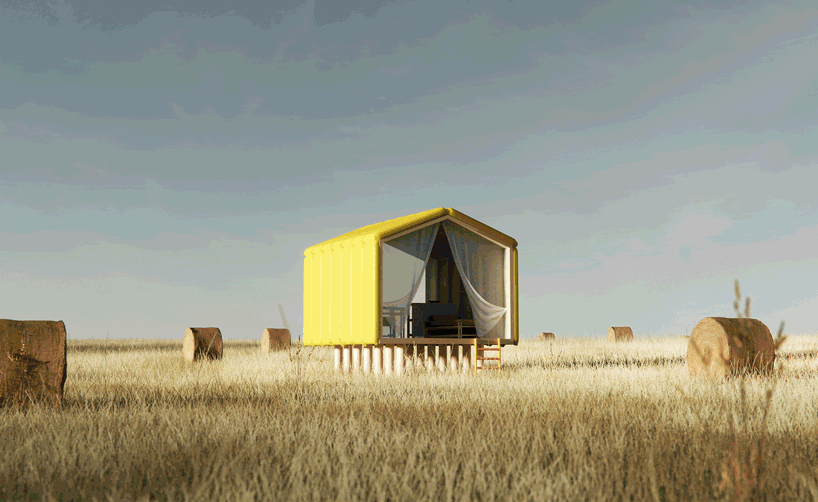‘the field of possibilities’ questions the concept of housing through micro-architectures
Döppel Studio experiments with micro-architectures
Döppel Studio explores alternative lifestyles through the design of six micro-architectures. Dubbed ‘The Field of possibilities’, the exhibition is set in Le Corbusier’s church in Firminy, France, and is inspired by the legendary Cabanon, a tiny wooden house built in 1952. Through these installations, the studio invites visitors to question the concept of housing and how it responds to our essential needs, such as the need for food, water, sleep, and the sense of being protected. Besides, while meeting the needs for shelter, ‘The Field of possibilities’ examines the connection between body and mind. All images by Döppel Studio
All images by Döppel Studio
Taking cues from le Corbusier’s Cabanon
The initial idea of the project started with reinterpretations of the Cabanon in Roquebrune-Cap Martin. Considering as an icon of modern architecture, that has impacted the whole world, it’s rather uneasy to confront it and try to give a new performance of this micro-architecture that is now elevated to the rank of an artwork. However, with gentle gestures and respect, the studio offers a new personal and innovative version, corresponding to today’s lifestyles and societal challenges.
Swinging between objects, architecture, and clothing to live in, the installations are dressed in yellow jackets in agricultural tarpaulin stuffed with cereal waste for the harvest period. According to the design team, ‘The Field of possibilities’ is like Le Corbusier’s tiny home, it leads to reflection on essential things as a refuge for body and mind.
The studio opted to embed the installations in the countryside, coming in contrast to the exceptional location where the Cabanon was built — a natural site over the Mediterranean Sea, surrounded by lush vegetation. Far away from touristic places, in an unoccupied landscape planted with ephemeral straw castles, the cabins encourage its user to nomadism and question the notion of comfort. Although the location was a radical choice, the function is maintained the same as Le Corbusier’s project, serving as temporary and seasonal housing. This leisure micro-architecture can meet our needs for shelter, sleep and work as evidenced by the present furniture.


